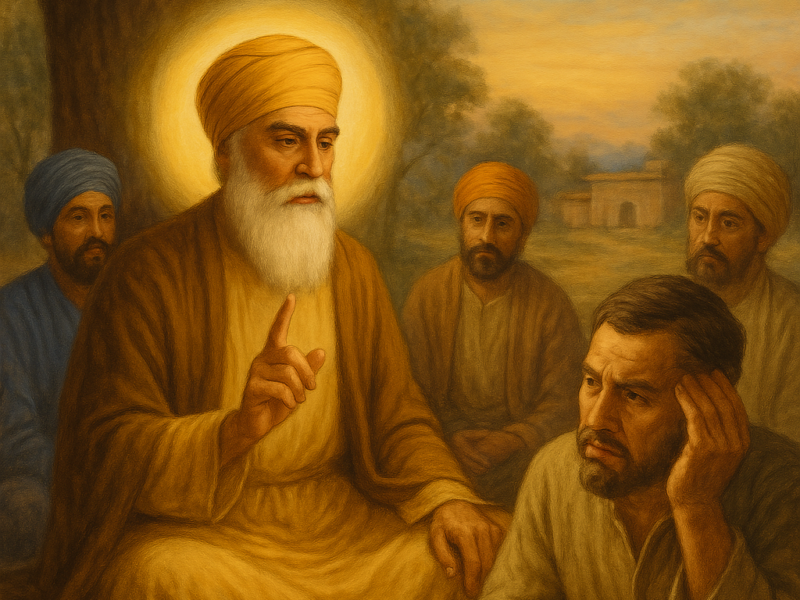Maya is a term that appears several times in the Guru Granth Sahib. Despite the fact that the most frequent definition of maya is money or prosperity, it embraces everything that appeals to your senses. Maya manifests itself in a variety of ways, including love for one’s family and things, beauty, singing, eating, relaxing, and detest for anything. Maya is made up of desire, wrath, greed, possessiveness, arrogance, envy, sloth, and other emotions. The repercussions of Maya are felt by all living things. Every living thing has been labelled filthy or mentally ill in Guru Granth Sahib due to the obvious pain experienced by Maya.
Everything in this universe is a deception, according to Sikh faith, and Waheguru is the sole genuine truth. In Sikh scripture, a person plagued by maya is characterised as having the fallacy of assuming that things that are ephemeral and transitory are worth considering and everlasting. A person who is linked to maya cannot resist the cycle of life, mortality, and resurrection; one of the primary goals of each and every Sikh is to free oneself from rebirth. A Sikh aspires to avoid rebirth by leading a virtuous life of honest hard work, service toward others, and remembering of God’s name, free of maya and the fleeting material world.
Maya has consumed mankind to the point where all of humanity’s activities centre around it. Waheguru, on either side, is immune to Maya’s influence. As a result, if we are on one end of Maya, Waheguru is on another. The sea of Maya, or the Universal Sea, is a phrase employed by Guru Granth Sahib to illustrate this duality. Humans must cross this water in order to become one with Waheguru, that is an arduous process. Guru Granth Sahib has a remedy for this near-impossible endeavour once again. The Perfect Guru serves as the ship, and His Shabad serves as the guide, in order to travel this ocean of Maya. As a result, the Guru serves as a link among man and Waheguru.
The Gurus’ understanding of maya and the world includes more than just a focus on the ephemeral nature and impermanence of the order of the universe. Maya is anything that has time as its essence; it has arisen at the Divine’s command and must vanish when He so desires. To put it another way, maya, or real Nature, is neither limitless nor self-contained. It is rooted in the Creator, whose work it is. It is also the corporeal incarnation of the Divine Spirit at the very same time. And it might be ephemeral, but it is not false. The True and Immortal One lives in this earth, which is God’s dwelling.
Maya is also associated with riches (material items) and a sense of devotion to worldly stuff in Gurbani. In Sikhism, maya is synonymous with avidya, or ignorance. This really is the subjective side of maya, as contrasted to the Advaitic perspective, which emphasises the objective element while emphatically objectifying the notion in its exposition. The Sikh system recognises the existence of maya and emphasises the lowering of its hold on the human brain so that, with the free and independent psychic faculties, one can achieve spiritual understanding a state completely free of maya’s trance, a condition of being relieved from its web and one with the Objective fact.
Perhaps Siddhas and Jogis, as per Gurbani, are susceptible to the impact of maya and find it difficult to focus on their devotion. Maya is, in truth, a link of joys and sufferings, and ego drives one to act in a way that leads one wrongly. Illusion and ego cannot be defeated without the Word.
Another type of maya is property and wealth, the one which continues to accumulate and become connected to while forgetting about God. Maya has numerous colours and enchants the mind in various ways. It does not accompany man after he departs from this world; just God’s Name remains. Maya is not slain by mind control.
Only the Guru’s Word, which dwells on His Name, can purify the mind. As one’s cravings grow, he sinks further into the quagmire. Actions shape a person’s personality and intelligence.





